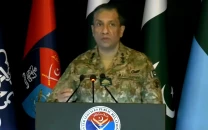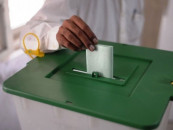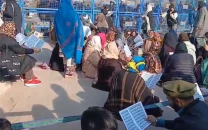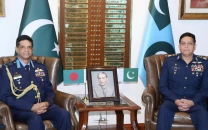Breaking the silence: Alternative means of reporting rape
Incidents can be reported directly by victims via SMS, email, Facebook and Twitter.

The percentage of Internet users in Pakistan is more than 11% of the total population, much higher than that of any other country in South AsiA. PHOTO: FILE
For most rape victims in Pakistan, filing an official report is as emotionally taxing as the crime itself.
The trauma of lodging an FIR with the police, getting sampled for DNA evidence, and endless rounds of questions followed by lengthy trials all add up as reasons that discourage a significant number of victims from bringing this injustice into the limelight.
However, with the advent of technology and multiple social media outlets, alternative forums of reporting crime, including rape, have now begun to take shape.
One such example is a reporting and mapping initiative by Bytes for All Pakistan – an organisation that focuses on using information and communication technology for development, democracy and social justice.
According to Bytes for All Country Director Shahzad Ahmad, the idea for a map documenting violence against women using official reports, media reports and crowd-sourcing, was born in October last year at an Innovation Lab.
The interface of the website maps out violence according to clearly defined categories, encompassing everything from someone taking photos/video without consent to sexual assault and rape. Incidents can be reported directly by victims via SMS, email, Facebook and Twitter. Cases reported by mainstream media are also included.
Once a case is reported, a small team verifies the authentication of the claim. The victim has a choice of publicly stating their identity or remaining anonymous.
As of now, the initiative is still in its nascent stages. And yet, while only 19 cases have been reported in the past four to five months, Ahmad has high hopes for this project.
This hope of his is based on ground realities.
Today, Pakistan enjoys a burgeoning digitally active population that comprises over 20 million people with Internet access, 5.5 million with Facebook accounts, 1.9 million with Twitter accounts and 1.7 million as registered bloggers. Additionally, the percentage of Internet users in Pakistan is more than 11% of the total population, much higher than that of any other country in South Asia.
However, not all statistics are positive.
Nearly 66% of Pakistanis have access to a cell phone but, according to the Pakistan Institute of Public Opinion’s 2010 Media Report, only 28 % of women own cellphones as compared to 72% men.
Sana Saleem, director at Bolo Bhi, a non profit organisation that works in areas of gender rights, legislation and Internet freedom, says that access to reporting tools, such as SMS, is not the challenge – the real key is to ensure its effective usage by people.
“It’s crucial that these projects take a step further than data visualisation and gear up for some activism on the streets, as well,” she elaborates.
Ahmad is well aware that the project needs mobilisation from the grass-root level. For this purpose, the organisation has partnered with 13 NGOs and conducted training activities in several areas, including Swat and Mardan.
“If a woman needs legal help, we should be able to connect her to a lawyer. If she needs shelter, we should be able to provide her that,” explains Ahmed.
Dr Ambreen Ahmad, founder of Rozan, an NGO working on the issues of gender, emotional health, and violence against women and children, states that one of the primary reasons rape victims do not report the crime is due to the lack of support mechanisms in its aftermath.
“Once you break the silence, then what happens? Providing them with the support they need afterwards is critical for the success of such programs,” she says, adding that the violence maps will also be used for research purposes. “We want to look at the map after a year and analyse trends. For example, right now we have found out that things are getting worse in Southern Punjab.”
She, too, is hopeful that change will come eventually.
Published in The Express Tribune, April 30th, 2013.



















COMMENTS
Comments are moderated and generally will be posted if they are on-topic and not abusive.
For more information, please see our Comments FAQ